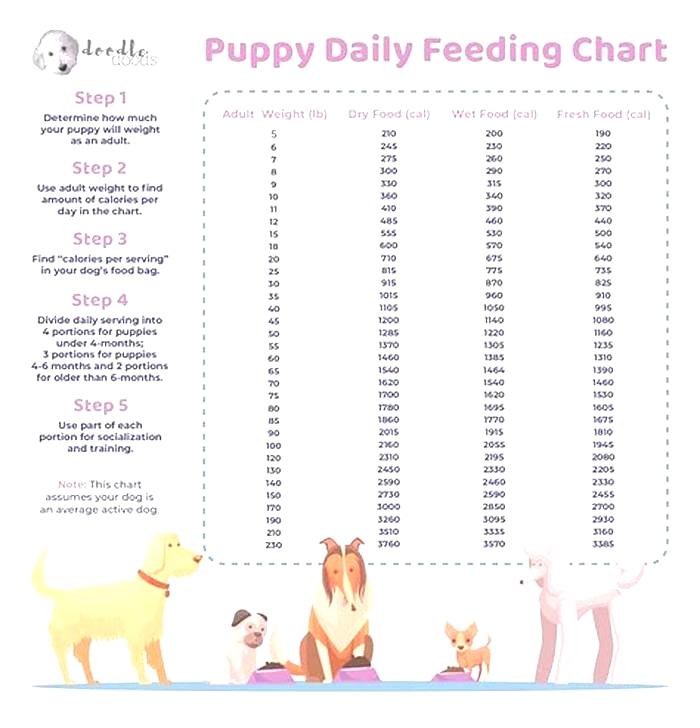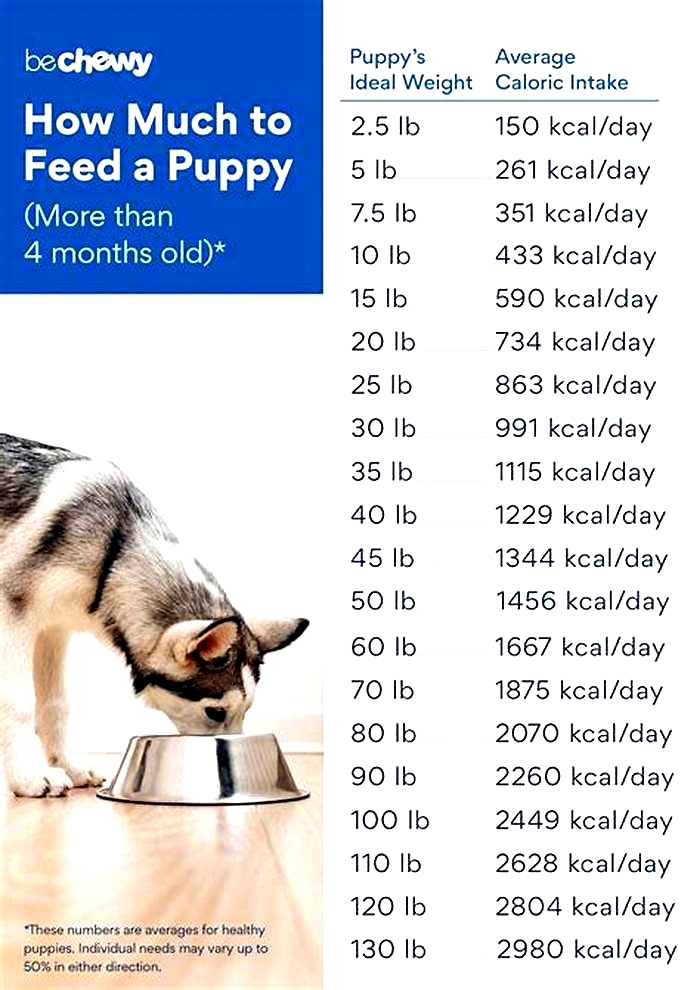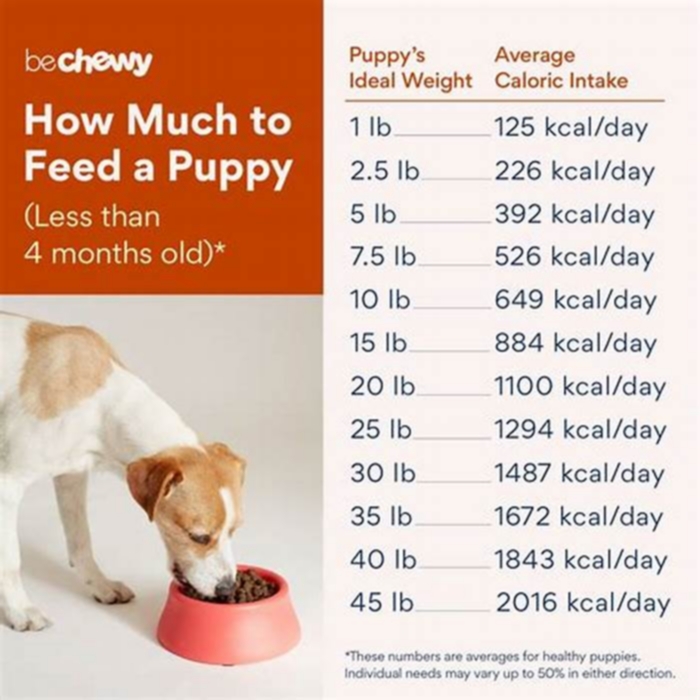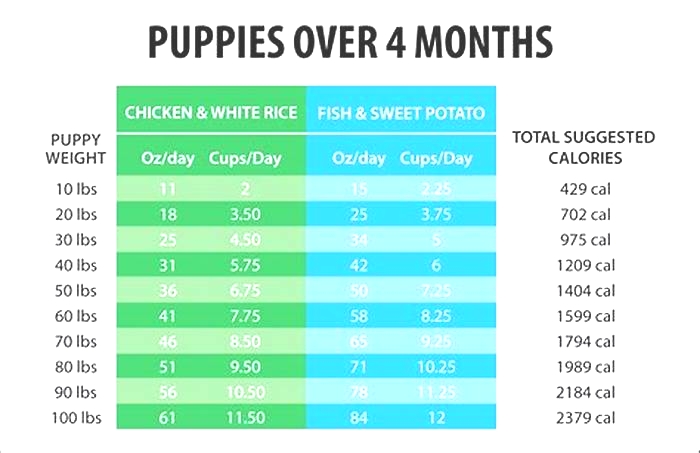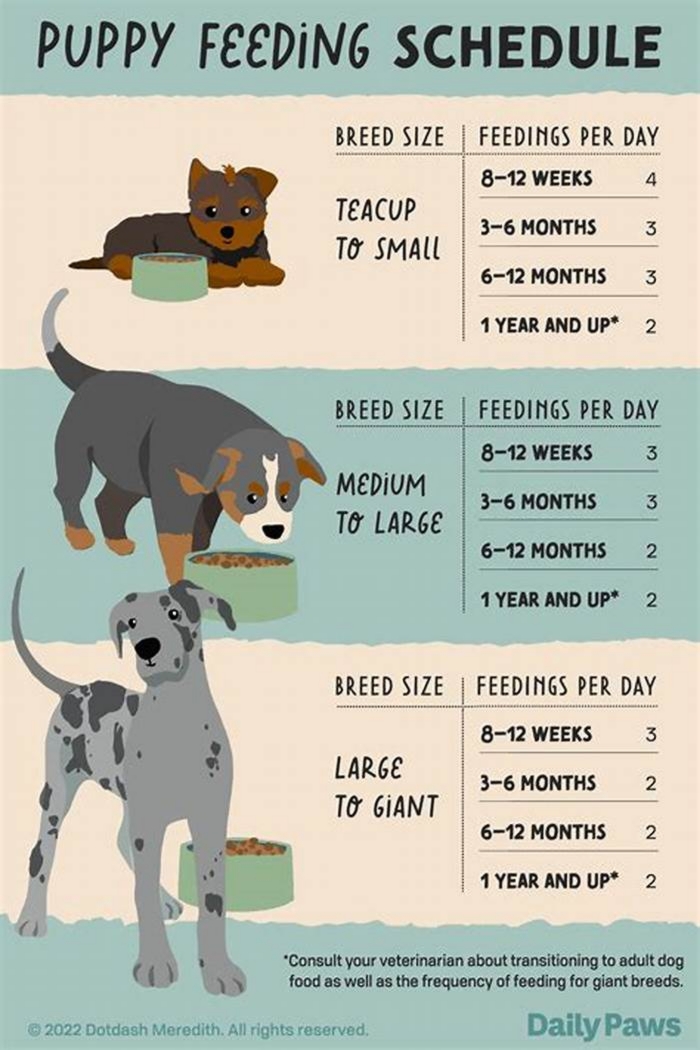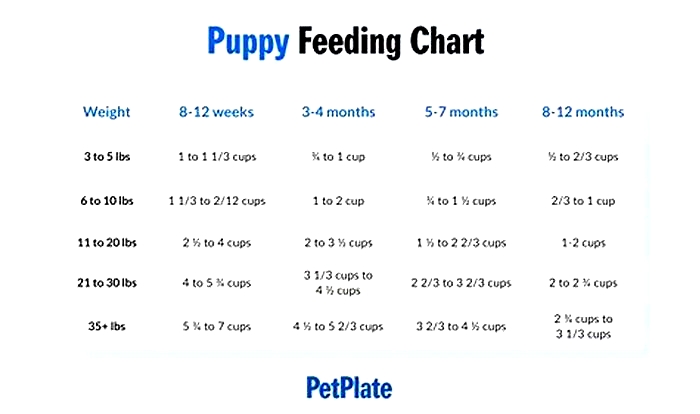Is it OK to feed a puppy once a day
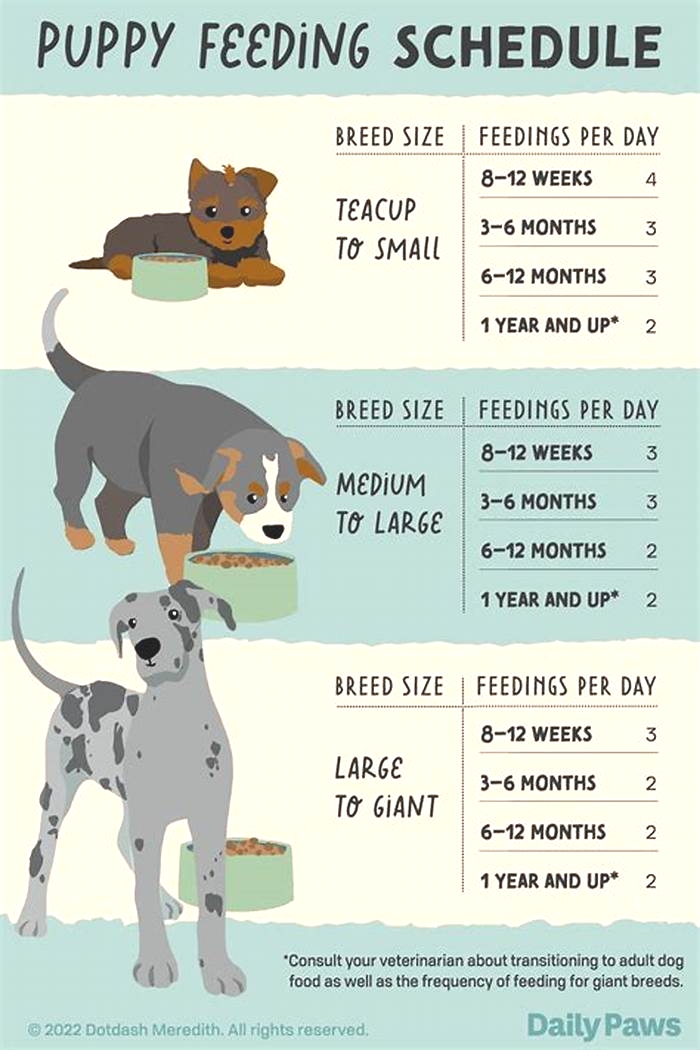
Is it ok to only feed a dog once a day?
For years, they taught us that it was best to only feed our dogs once per day. It seemed a little strange, but thats what the professionals said, so thats what we did. However, now, they say different.
Now, professionals are saying that it is not good for your dog to eat only once a day, that it can cause health problems, as well as behavioral problems. Lets see what experts have to tell us about feeding our beloved canines.
Is it ok to only feed a dog once a day?
You want to know if its OK to feed your dog once a day. Well, there is more than that goes intofeeding your dog. Read on.
Why should my dog eat on a schedule?
First, know that dogs should always eat on a schedule. The more ordered a dogs life, the happier they are because a routine makes a dog feel tended to and secure.
Besides, if your dog eats on a schedule, he will need to relieve himself on a schedule. Usually, a dog has to go to the bathroom within 15 minutes of eating his food. This not only helps us to know when hell need to go out, but it aids greatly in potty-training puppies as they will associate the urge to potty with the outdoors.
Also, it will be much easier to tell when he has lost his appetite. This will aid in knowing when he isnt feeling well so you can look for other signs of illness to try and determine what may be wrong with him.
What if he wont eat on a schedule?
If your dog wont eat on a schedule, its easy to change his habits. Its a matter of teaching him to eat when food is offered to him.
To teach him, at feeding time, offer his food for only around 10 minutes. If he hasnt started eating by then, take up the food and dont offer it again until its time for the next feeding. Then, offer it for 10 minutes, doing the same thing.
You can offer the food for 15 or 20 minutes instead of 10 if he hasnt gone off to play seek other endeavors but no longer. To reiterate, the idea is to teach him to eat when the food is offered. Eventually, he will learn.
Is it better to feed a dog once or twice per day?
Now that you know you should feed him on a set schedule, its time to find out how many times per day you should feed him. Whats the answer?
How many times per day should I feed my dog?
Just as a humans does, a dogs tummy empties within only a few hours after eating, and within around 8 hours or so, he is hungry again. It only stands to reason that he should eat at least 2 times per day.
As a standard rule, you should feed puppies under 4 months old 4 times per day. They are small and very active, so they dont have a lot of stored energy, plus they burn it very quickly.
Puppies, from the time they are 4 months old until the time they are 6 months old, should eat 3 times per day. They are growing now and have more room for stored energy.
After the age of 6 months, feeding a dog 2 times daily is sufficient for most dogs as they have the ability to store much more energy and are usually less active.
However, these are only standard guidelines, and there are many other considerations that should be made.
When should I feed my dog?
If you feed your dog twice per day, you should feed him around12 hours apart, no more than 12 hours apart. This is because when a dog goes more than 12 hours without eating, it causes him to have an acidic stomach and nausea.
However, feeding an adult dog 2 times per day is not a hard and fast rule, you can also feed an adult dog 3 times per day, which is even better for him. In this case, you should feed him around 8 hours apart. This is much better for his stomach and his blood sugar.
What other considerations need to be made?
When deciding how often to feed your dog, youll need to consider his breed, age, size, health, the amount of activity he gets, and his energy level.
Weve already discussed that puppies need to eat more often than adult dogs because they need to supplement their energy levels, but what about dogs who are in bad health or who have dietary restrictions? They may require customized feeding schedules.
Teacup breeds need to be fed more frequently for the first few weeks of life because they are prone to low blood sugar or hypoglycemia. They have extremely low energy reserves, and this can be mortal. Early on, they will need to be fed every 2 or 3 hours.
How many times should I feed a dog per day?
So, you can feed your adult dog 2 or 3 times per day. Can you leave food out for him all day long and let him graze? Is this good for him? Lets see.
Is it ok to leave food out for my dog all the time?
Do not use a contraptionthat constantly fills your dogs bowl. This is called free-feeding, which is not good for your dog, mainly because it can cause obesity, but also because it attracts roaches, mice, flies, and more.Also, it makes it hard to tell when he has lost his appetite, so it is difficult to tell when he may be ill.
For puppies, grazing or eating at will can cause binge-eating, juvenile obesity, diabetes, orthopedic problems, and more. This makes for unhealthy adult dogs.In adult dogs, overeating can lead to obesity, diabetes, orthopedic problems, and more.
It is believed that there is a genetically determined set point for each dogs adult size, and a slow, steady, controlled growth tends to ensure optimal body condition in an adult dog.
How do I make a plan for feeding my dog?
In America, most dogs are fed too much food and exercised too little, leading to lots of canine obesity. This may look cute to humans, but it can be very uncomfortable for dogs, especially certain breeds, which are prone to orthopedic problems anyway.
For instance, aDachshund is prone to disc disease in their necks and backs anyway, so when they are allowed to become overweight, especially since their torso is so long, this can cause them serious problems and lots of pain in their spines.
To feed your dog, you should first know your dogs weight and also what weight is ideal for his specific breed. If you cant figure out the ideal weight for his breed, your vet can help. Also, PetSmart or Unleashed by Petco will weigh your dog for you.
Now, your dog food will list the daily recommendations for caloric intake. Divide that number by the number of times you intend to feed him. If you give him treats, make sure to subtract the number of calories in the treats from the calories the daily recommendation before dividing to get your serving size.
Make a rough plan and start feeding your dog. Weigh him once per month, as this will tell you if he is getting too many calories or too few. You can adjust your feeding plan until you get it right.
What should I feed my dog?
The most important thing to do is to choose high-quality food, like Ollie.
More and more people are going to human-grade dog food. This dog food is made from ingredients found at reputable farms. There are no by-products, fillers, preservatives, or artificial flavors.
This is a meal-delivery service, delivering frozen dog meals to your door. According to your dogs breed, age, health, and more, these meals are customized specifically for him.
They are pre-made, pre-portioned, and they even make your schedule, and they deliver in as few as two days.
Dogs who use human-grade food say their dogs have decreased allergies, shinier coats, improved appetites, and more.
Is it cruel to feed a dog once per day?
It is up to you how many times per day you feed your dog, but consider how you would feel if you only got to eat one meal per day. Would your stomach growl? Would you get weak?
If your dog goes more than 8 to 10 hours without food, he gets very hungry. If he goes without food for over 12 hours, he likely vomits up bile, which is secreted when a dog has an empty stomach.
Bile not only tastes nasty, but it can damage a dogs throat, gums, and even teeth.
Can I feed my dog once a day at night?
It is best to feed your dog at least twice per day once in the morning and once at night. Feeding him in the morning gives him the energy to go happily throughout his day doing whatever he needs to do, and feeding him at night allows him to sleep in peace without hunger pains, feeling loved and cared for.
What happens if you feed a dog once a day?
Of course, he is your dog, and it is ultimately up to you how many times you feed him. The professionals can only tell you what experience has taught them. Following are some dangers of feeding your dog only once per day.
Angst
Long periods between feedings can cause dogs to become extremely anxious about their feeding experience, so that when their feeding time does come, they gulp their food down, possibly overeating and making themselves feel sick. This is because they anticipate going for another long period without food.
Angst can cause irritability or even obsessive-compulsive disorder. OCD in dogs is one of the causes of hot spots, painful, oozing lesions that often end up as bacterial infections from the biting and scratching the dogs do.
Aggression
Dogs, especially puppies, that get excessively hungry can become aggressive, chewing up everything in sight and causing mass destruction. There can be secondary causes, also, but again, think how you feel when you are hungry. Dont you get irritable and possibly get a headache?
If you insist on only feeding once per day, consider making a puzzle toy available. These toys are filled with kibble, chicken, or cheese, and your dog has to work to get a piece of food out. He will only get one piece out every once in a while, but it will keep him from being hungry.
Feeding Your Dog Once a Day: Is It Cruel?
This article has been reviewed in accordance with our editorial policy.
The information in this article is not a substitute for professional help.
When it comes to feeding dogs, the advice is bountiful, endless, and often confusing.
So when you might hear a suggestion of feeding your dog once a day, it might immediately come off as cruel. Turns out, once-a-day meals might actually have more health benefits than you originally thought.
Feeding your dog once a day is not cruel and might benefit them. For dogs that thrive on this diet, the signs of aging can be reversed, gastric upset can be remedied, and some dogs wont be forced to overeat. On the contrary, single feeding can cause medical issues in dogs that need more food, the food can be disproportionate, and an unhealthy relationship with food can form.
In this article, I will explore the positives and negatives of feeding your dog only once a day, so you can make an informed decision for your furry best friend.
Ready? Lets dive in!
Table of Contents
Traditionally, adult dogs are fed twice a day: once in the morning and once in the evening. If youre someone who free-feeds, it could even be more frequent than that. With this being the societal norm, it likely sounds like you are starving the poor dog if only one meal is fed daily.
Turns out, its actually not cruel at all.
The belief that one meal a day is starvation often comes from us naturally paralleling our life and behavior to that of our dog.
A person only eating once a day is usually seen as having some type of eating disorder, but animals dont function the same way. A dogs digestive track and nutritional needs differ tremendously from a humans, which is why they cant eat the same way as us!
As such, some dogs (dependent upon breed, age, and overall health) are actually very happy, only eating once a day. This is especially common in more primitive breeds, such as the rare African Azawakh and Yakutian Laika.
Feeding once a day is known as a form of intermittent fasting, which is what a dogs wild ancestry (wolves and primitive canids) would experience in the wild.
Other breeds that are quite far removed from wild ancestors may not be so inclined, such as the Golden Retriever or the Great Dane. Still, the general consensus states that your dogs eating preference is not cruel - whatever it may be.
According to a recent scientific study that was released in 2021, feeding your dog once a day does actually have health benefits. 47,000 dogs were studied, and the results were rather fascinating.
For starters, once-a-day feeding (intermittent fasting) yielded beneficial outcomes in the cardiac (heart), dental, and neurological (brain) health realm!
The study showed that the signs of aging could be reversed, which meant that the heart continued to beat in the correct rhythm, the teeth were in good condition, and the cognitive ability was maintained well. The decline of various bodily functions slowed significantly. The dogs memory and spatial awareness were very much improved in older canines.
As the study states, After controlling for age, sex and breed, the team found dogs that were only fed once per day, rather than multiple times, appeared to have lower scores of cognitive dysfunction, equivalent to the difference between a 7-year-old and 11-year-old dog. They were also less likely to have a range of health problems, including gastrointestinal, dental, bone, kidney, and liver disorders.
Another benefit is digestive health - intermittent fasting helps reset the bodys system and gives the digestive tract a bit of a break to reset. This also applied to humans, probably one of the only real comparables there. It can be a decent way to resolve types of gastric upset.
Some dogs dont need a lot of food - and owners will often pressure their dogs to eat more than they want or need to. For the dogs that prefer lighter meals, a single meal per day can work a lot better than forcing them to eat more than once. The pressure surrounding food can be detrimental to their mental health.
On a practical note, some may state that single feeding is easier on a working persons schedule (although a dogs diet should not depend on this!).
Keep in mind that not all dogs can thrive on one meal a day. Many factors are involved in whether or not single feedings are a successful diet plan for your pup.
Some dogs can actually get ill from once-a-day feeding.
This is because a dog that needs a larger calorie count tends to thrive better on multiple meals per day than just one very large meal. Dogs can begin to vomit, have blood pressure drops, and be very lethargic. This also applies to very active dogs who need to eat frequently to maintain their body type.
Feeding a dog once a day is also not a feasible option for certain medical conditions, such as dogs with diabetes.
There is also a con of human error involved in single feeding.
You have to properly calculate how much the dog needs to eat, and once-a-day feeding can (unintentionally) begin malnourishing the pup if you havent portioned everything correctly. It may be something that isnt noticed at first but becomes dangerous over time.
Equally, single feeding can potentially have the same cons as scheduled feedings. Because the dog is hungry and anticipating the meal, this can cause dogs to have their own version of an eating disorder, such as gobbling down food way too quickly.
Eating too fast, as mentioned before, can cause bloat, which can be fatal. Once-a-day feeding can also lead to food aggression and resource guarding.
If you find that your pup would do well on a single meal a day, you have to transition gracefully (or risk causing gastric upset!).
Before making any sort of dietary changes, it is advised to consult your dogs veterinarian or a licensed canine nutritionist, as changes in food can impact overall health. But if given the green light, this is how you make a positive transition:
For starters, you cant do single feeding with a puppy. Puppies need much more food than adult dogs to maintain their growing bodies!
Its why puppies are fed three times per day, and adult dogs are not. Not giving a puppy enough meals throughout the day can stifle their growth and cause medical issues later down the line.
As such, ensure your dog is an adult and fully developed before considering single feeding. Dogs reach full maturity between two and three years of age but consult your veterinarian first.
Before switching your dog to this eating style, you should have all of your ducks in a row.
As such, make sure you understand how to portion the meals correctly. Consult your local specialist on how much your dog needs to eat per day based on their breed, weight, body type, and activity level.
Once you have the portions correct, it is suggested to meal prep for the week (that just makes it easier!).
Next, decide when the single feeding will occur.
You can choose from morning to mid-day, to evening. The best choice really depends on what your dog is like. I would suggest picking a time based on when your dog tends to be the most active and hungry.
For some dogs, morning is the best because it sets their day off right. Midday is perfect for those who like to sleep in and take it easy. Nighttime feeding is best for others who cant go to sleep on an empty stomach.
Like any diet change, you cant do it cold turkey overnight! A dogs stomach wont be able to handle it.
It is best to do so gradually - try single feeding only a day or two per week. Then gradually increase the number of days you do single feeding based on how your dogs stomach reacts.
If your dogs bowel movements are normal, your dog is not vomiting, and your dog isnt too lethargic, then you can definitely proceed forward. Eventually, you will come to a point where your dog is used to single feeding!

